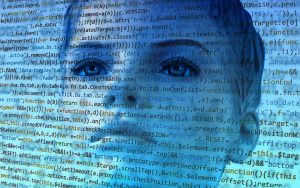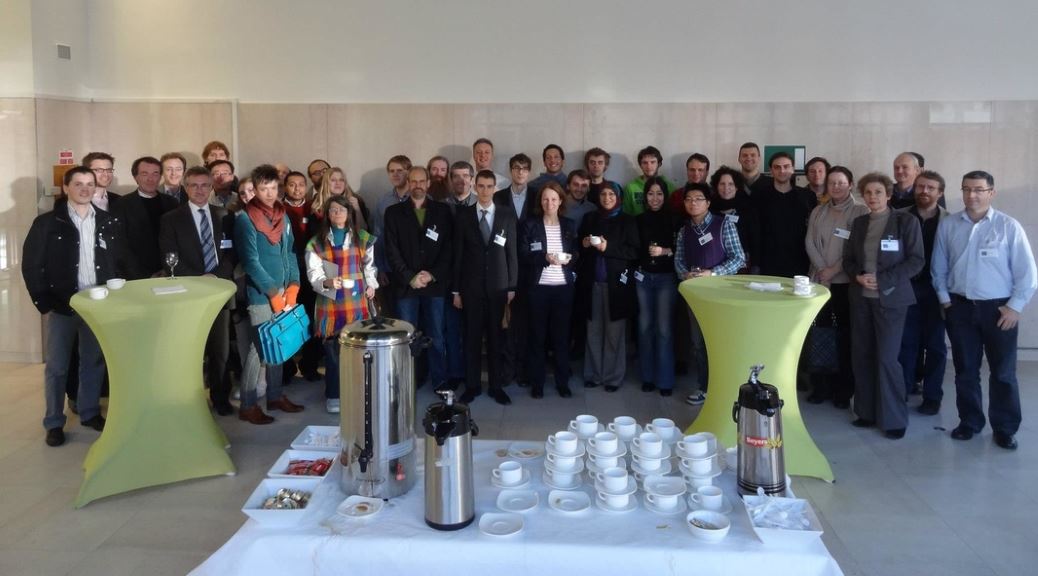The first person to live to 200 years old has already been born. The future is enormous. It has never been more existentially transformative. Stephen Fry, British writer, comedian, actor and director, March 2018.
Topic of the month: How could artificial intelligence (weak or strong) help against aging ?
 There are many definitions of artificial intelligence. In this paper, we will examine all of the computer applications capable of performing operations previously accessible only to humans. The term “strong” or “general” (but not necessarily conscious) artificial intelligence is used to refer to a computer system with an overall ability approaching or exceeding human ability.
There are many definitions of artificial intelligence. In this paper, we will examine all of the computer applications capable of performing operations previously accessible only to humans. The term “strong” or “general” (but not necessarily conscious) artificial intelligence is used to refer to a computer system with an overall ability approaching or exceeding human ability.
There are currently countless computer applications with a specific intelligence exceeding humans in more and more numerous and broad fields, but no form of general artificial intelligence.
Reducing the risks of senescence can also help reduce other risks for humanity.
The same is true for artificial intelligence as for many other technological advances. It can bring progress or it may bring human destruction.
But when it comes to artificial intelligence it gets worse, as in the case of a few other technological advances, such as nuclear energy. In the worst-case scenario it is not only lives of men and women that are at stake, but the fate of humanity as a whole. Scientists and major figures such as Elon Musk, Bill Gates and Stephen Hawking have raised questions about this issue. They were inspired, notably, by Nick Bostrom, a Swedish philosopher living in Oxford and author of the book Superintelligence, paths, dangers and strategies.
Nick Bostrom is not only pessimistic, or more precisely, extremely prudent, with regard to technological progress. He is also among those who think that we could one day vanquish illnesses linked to aging thanks to scientific progress. He expressed this idea, in an imaginative way, back in 2005, in his Fable of the Dragon-Tyrant.
Living longer and escaping from so-called ‘existential risks’ (which could end the history of humanity) make up two complementary fundamental concerns.
In this letter, we consider that prioritizing the use of artificial intelligence for everything that makes humans more resistant to disease and damage is a potentially positive endeavour for that objective and equally so as to reduce the risks of destruction.
Indeed, among the major characteristics of artificial intelligence, there is the fact that this intelligence is not necessarily:
- combined with a moral sense considering human life to be a fundamental value;
- endowed with ‘common sense’, that’s to say, the same lines of thought of which most normally informed humans would spontaneously be capable.
For example : it is ‘common sense’ that the best way to look after plants so that they do not die of thirst is not to destroy the plants, even if this will avoid them dying of thirst. Yet, this common sense is not necessarily obvious to a ‘super-intelligent’ machine.
A use of artificial intelligence centred on health should reduce the probability of catastrophic consequences arising, since the ultimate goal will be the long-term improvement of human well-being. This will require us to theorize in detail all that is good for the health, resilience and integrity of human beings and this could also ‘disaccustom’ us, discourage us, from potentially harmful research.
Artificial intelligence to accelerate product research (biological or not) and to automate experiments
The cost of sequencing is decreasing considerably, but still remains relatively high for those species that have not yet been ‘deciphered’. That is one of the reasons that many living species with very short or very long lifespans have not yet been sequenced.
Maximum lifespan among the millions of living species varies from a few days to several centuries and even several millennia for certain plants. Within a given species, the maximum lifespan also varies significantly. There is still much research to be done to understand the genes involved in senescence and their interactions and then to explore the biological reasons for these differences and possible gene therapies.
In addition, many substances and combinations of substances used in the medical field could have a favourable impact on longevity. IT tools allow us to detect what is most promising on the basis, notably, of an analysis of the scientific literature and of ‘automated’ projections from this analysis. That could be a field of exploration covered by IBM Watson, which currently works mainly on medical diagnosis. It is also one of the fields of investigation covered by the company Insilico Medicine.
In the laboratories themselves, a great deal of longevity research is carried out with animals (drosophila, flies,…). Computer and also robotic applications allow us to envisage an acceleration of data processing and reduction of costs, whether in terms of care of the animals or measurement of all the parameters. For example, for mice it should be possible to look after the animals and accurately measure certain metabolic modifications without human intervention (and also with less risk of error and subjectivity).
Finally, in the more distant future, it is conceivable that we may be able to introduce nanotechnology-sized tools into the human body that include a software application (or connected to a network).
Artificial intelligence to simulate animal research
Cells, neurons, organs and interactions between them can to a greater and greater extent be simulated with IT. This is useful from the point of view of cost, speed and also animal welfare. Currently, the most studied invertebrate in the animal world, the nematode C. Elegans is also the animal for which computer simulations are the most developed, particularly for the 302 neurons of its (tiny) nervous system.
Artificial intelligence to simulate research on humans
The same applies for humans as for the rest of the living world, as concerns the interest of simulation, but with greater complexity and interest.
There is no current project to simulate an entire human being, but there are many studies based on certain organs. In the neurological field, the most important current simulation work is that carried out by the European Human Brain Project (and the similar American project). It is about understanding the mechanism of the brain, including Alzheimer’s disease. As things stand, researchers are still very far from a representation neuron by neuron and synapse by synapse of the brain. The most complex organ in the known universe is not yet within the reach of the most advanced computer scientists.
And what we haven’t thought about yet
The progress of medicine, science and artificial intelligence will not stop at what we imagine today, whether dreams or nightmares. We will go beyond that.
Good news of the month: Three days of international conference to “undo” aging
On March 15, 16 and 17, hundreds of researchers, activists, journalists and investors from all over the world met in Berlin for the Undoing Aging conference. They explored together the mechanisms of human aging and ways to slow it down or even reverse it.
At the end of the conference, it was announced that the event would now be annual. It is to be hoped that this conference will only be necessary for a few years!
For more information:
- In general, see in particular: heales.org, sens.org, longevityalliance.org and longecity.org
- Image source





